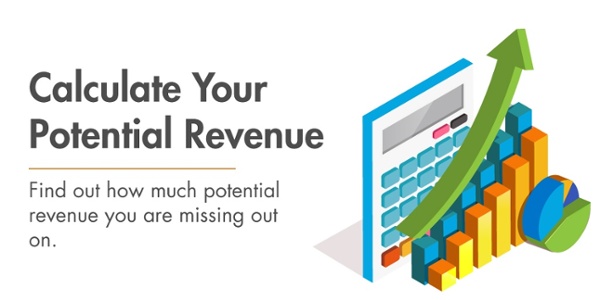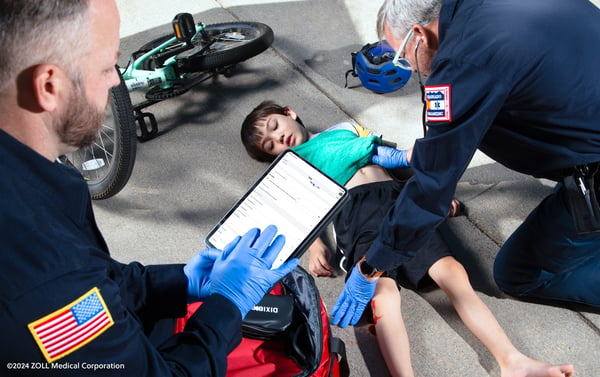Chart Smarter: Why One EMS Agency Ditched Paper for Mobile Tech
The 7 Deadly Sins of EMS Billing
In September 2015, the Department of Health and Human Services Office of the Inspector General (OIG) issued a report, “Inappropriate Payments and Questionable Billing for Medicare Part B Ambulance Transports,” which looked at claims data for 7
Was this information valuable?

In September 2015, the Department of Health and Human Services Office of the Inspector General (OIG) issued a report, “Inappropriate Payments and Questionable Billing for Medicare Part B Ambulance Transports,” which looked at claims data for 7.3 million ambulance transports furnished during the first half of 2012. The OIG reviewed this claims data to determine whether claims were billed appropriately to the Medicare program. The results found that Medicare paid:
- $24.2 million for ambulance transports that did not meet certain Medicare requirements. This included transports to a non-covered destination, as well as transports to a covered destination but where the level of service was inappropriate.
- $30. 2 million for ambulance transports for which the beneficiary did not receive Medicare services at any origin or destination. These transports represented 1.1 percent of all Medicare payments during the first half of 2012. To account for the possibility that the ambulance supplier may have submitted a claim with the wrong origin or destination, the OIG only flagged a claim as questionable if its records determined that the beneficiary did not receive Medicare services at any other facility type within one day of the transport. Because there was no record of the beneficiary receiving Medicare services at or close to the date of transport, it was likely that Medicare inappropriately paid for the ambulance transports. It is possible these transports occurred during an inpatient hospital or skilled nursing facility (SNF) stay, and may have been the responsibility of the inpatient facility.
- $17.4 million for ambulance transports to non-covered destinations, including return trips following treatment at the non-covered destination. These transports represented more than half of all Medicare payments.
- Payments for transports to and from a physician’s office accounted for $8.7 million in improper payments.
- $5.8 million for transports of beneficiaries to and from community mental health centers or psychiatric facilities (other than duly-licensed psychiatric hospitals).
- $7 million for transports with inappropriate combinations of the level of service billed and the type of destination, including $4.3 million in payments for specialty care transports (SCT) where either the origin or destination was something other than a hospital, SNF, or intercept site.
- $2.7 million for emergency transports where the destination was not a hospital, and therefore the claim should have been billed as a non-emergency.
Questionable Billing Practices
The report indicated that one in five ambulance suppliers tested positive for one of seven questionable billing practices. Twenty one percent of ambulance suppliers tested positive for at least one questionable billing practice. A little more than 17 percent of suppliers tested positive for a single measure, with 3.2 percent testing positive for two measures. One percent of ambulance suppliers tested positive for three or four questionable billing practices.
The seven questionable billing practices include:
- No Medicare service provided at either the origin or destination. The OIG could not identify the patient as receiving covered Medicare services at either the origin or destination on three percent or more of its transports. Thirteen percent of ambulance suppliers had questionable billing. Forty six percent suppliers where 95 percent or more of their transports. A high percentage of these cases could be indicative of billing for transports to non-covered destinations or billing for transports that were not provided.
- Excessive mileage for urban transports. A supplier’s average billed mileage for transports originating in an urban area was more than 10 miles. Six hundred and forty two suppliers had an average urban mileage of 34 miles, and 48 suppliers averaged more than 100 miles per urban transport. The cause of excessive mileage could be caused by billing for more miles than the ambulance supplier actually drove or billing for mileage beyond the nearest appropriate facility.
- High number of transports per beneficiary. The supplier provided dialysis-related transports and had a relatively high average number of transports per beneficiary. Beneficiaries transported by the typical ambulance supplier that provided dialysis transports received an average of four transports during the first six months of 2012; 533 ambulance suppliers were identified whose beneficiaries average 21 or more transports during the first half of 2012. A high average of per-beneficiary transports could be indicative of billing for transports that were not medically necessary. In effect, the OIG was attempting to identify ambulance suppliers that focused disproportionately on dialysis transports.
- Compromised Beneficiary ID Numbers. The supplier submitted a disproportionate number of claims for beneficiaries whose ID numbers were known to be compromised or stolen. The OIG looked only at suppliers that had submitted at least one claim involving the use of a compromised ID number. They identified 358 suppliers that used a compromised ID number on at least seven percent of their claims, and a subset of 31 suppliers that used compromised ID numbers on 95 percent of their claims. The high number of compromised beneficiary ID numbers could be attributed to billing for transports that were not medically necessary, or which were not provided.
- Inappropriate or unlikely transport level. Claims that were submitted with unlikely or inappropriate transport levels and destinations, such as claims submitted for an emergency level of service and where the patient was being returned to their residence. The OIG identified 268 suppliers who billed for an unlikely or inappropriate level of service on 3 percent or more of their claims and 19 suppliers that billed for an unlikely or inappropriate level of service on 25 percent or more of their claims. The high percentage of an ambulance supplier’s transports with inappropriate or unlikely transport levels (given the destination) could be caused by upcoding.
- Beneficiary sharing. Beneficiaries who, on average, received dialysis-related transports from an unusually high number of suppliers. The median among all suppliers that provided dialysis transports was 1.2 suppliers per beneficiary; for example, the average beneficiary used that service exclusively, with only a small number of patients switching to another provider during the first part of the year. The OIG identified 168 suppliers that saw their dialysis patients use 2.3 or more suppliers for dialysis. When multiple ambulance suppliers all provide dialysis transports to the same beneficiary, it could be evidence of the misuse of a beneficiary’s ID number or that the beneficiaries are shopping their services in exchange for kickbacks.
- Transports to or from a partial hospitalization program. Transports to and from a partial hospitalization program (PHP) is unlikely to be medically necessary because beneficiary’s that meet Medicare’s coverage requirements for PHP services generally do not qualify for ambulance transportation. For that reason, any supplier that took even a single patient to or from partial hospitalization programs during the first half of 2012 was flagged as questionable.

What Type of Suppliers Exhibited These Practices?
Ambulance suppliers that tested positive for any of these questionable billing practices were disproportionately likely to provide BLS non-emergency transports, including dialysis. The OIG noted that BLS non-emergency transports account for only 36 percent of transports billed by those suppliers that did not test positive for any of its questionable billing practices, but accounted for 65 percent of all claims submitted by those providers identified as having at least one questionable billing practice.
The majority of questionable ambulance transports were furnished to beneficiaries residing in a relatively small number of metropolitan areas: Houston, Los Angeles, New York, and Philadelphia. These four areas accounted for 18 percent of all ambulance transports during the first half of 2012, but 52 percent of all questionable transports. Collectively, these areas accounted for $104 million of the $207 million in Medicare payments for “questionable” ambulance transports during the first half of 2012.
On average, ambulance suppliers that provided transports to beneficiaries in these areas transported more Medicare beneficiaries and received more in Medicare payments than suppliers in other metropolitan areas. For example, the average ambulance supplier in Los Angeles received a total of $105,696 in Medicare payments, compared with an average of $16,137 in Medicare payments per supplier in other metropolitan areas. The numbers in New York ($85,606), Philadelphia ($56,667), and Houston ($34,951) were also far in excess of the national average.
Related Posts
The End of Delayed Documentation
4 Must-have Data Points for Dispatch-Billing Alignment and Maximum Reimbursement
ZOLL Pulse Blog
Subscribe to our blog and receive quality content that makes your job as an EMS & fire, hospital, or AR professional easier.
ZOLL Pulse Blog
Subscribe to our blog and receive quality content that makes your job as an EMS, fire, hospital, or AR professional easier.





